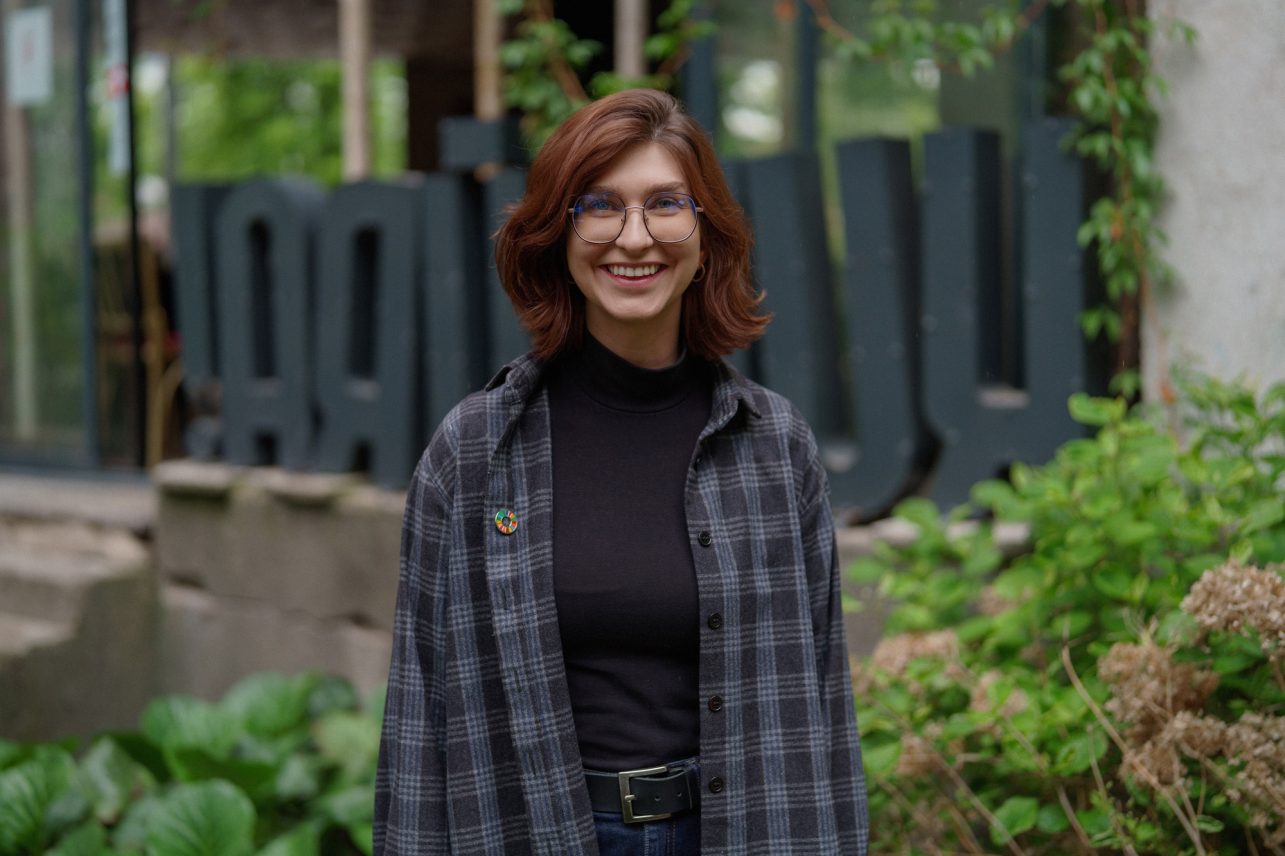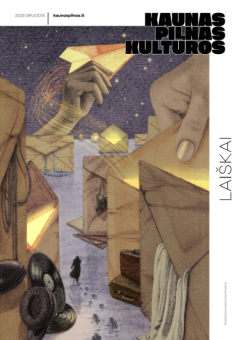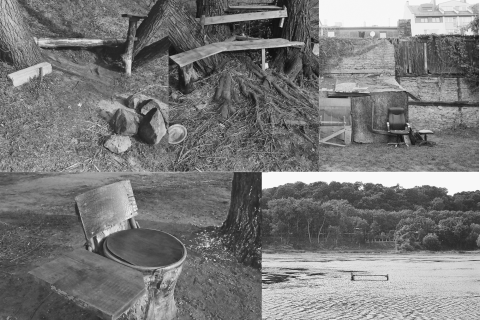There’s a saying,“To Garliava via Canada.” Something quite similar happened to the protagonist of this article, Paulina Štreimikytė, only in her case, it was through California to Babtai.
Once the favorite student of her biology teacher, Paulina remembers being “programmed” for medical studies. Life, however, had other plans: she didn’t get into medical school but instead discovered the field of food technology at the Kaunas University of Technology, Faculty of Chemistry. This was followed by an internship at an ice cream factory in Los Angeles, after which she didn’t eat ice cream for almost five years. Later, she wrote a letter to the Institute of Horticulture of the Lithuanian Research Centre for Agriculture and Forestry (LAMMC), where she prepared and defended her doctoral dissertation on… oat milk. Today, Paulina, who works at the LAMMC and VMU Botanical Garden, even contributed to the appearance of kombucha on the shelves of Lithuanian stores.
It’s fun to follow this scientist’s Instagram, where she shares the most unexpected and interesting details from the world of food science. One day, I came across an insight on her account that she’d picked up at a conference, about why food tastes better when eaten outdoors. That’s when I knew Paulina simply had to be featured in our picnic-themed magazine.

Paulina, why don’t we start with that – why does food taste better when you’re out on a picnic?
We feel better in nature, which is why food tastes better. Green color, tranquility, and sounds contribute to it. It’s not just nature – it’s important to hear what you’re eating. The crunch is very important! At the conference, which I talked about on Instagram, it was revealed that crunchiness is one of the first sensations associated with food in childhood. That’s why it is associated with deliciousness, goodness, and pleasure.
You have a PhD, but we would like to hear about the beginning of your studies at Kaunas University of Technology.
I was planning to study medicine – I enjoyed biology, and I participated in school competitions. But it so happened that I ended up at the Faculty of Chemistry at KTU. I got acquainted with the modules and freaked out: a lot of engineering, colloid chemistry, machine elements… I mean, there was practically no biology until the third year, when we were studying food at the cellular level.
After my bachelor’s, I went to California where I worked at a startup as a production manager for an ice cream company. You know, in America I realized that even though I had a degree, I actually knew nothing about food. During my master’s studies, I really dove into food science and worked on protein digestibility, which is relevant for athletes or people recovering from surgeries. I started cooking oat milk because… well, it just happened. I realized how much knowledge I was missing, so I ended up at the Lithuanian Research Centre for Agriculture and Forestry (LAMMC) and wrote my dissertation.
A dissertation on oat milk? Cool!
And on buckwheat, too! I also worked with kombucha and probiotic drinks. Those projects reached people, but at the same time, there was deep scientific work going on: what these drinks provide to the body, and whether they have functional components. For example, with kombucha and birch sap, we wrote a project about antiviral properties. We analyzed plant-based raw materials: aronia berries, and honeysuckle. What do they contain that helps strengthen the immune system?
It wasn’t all smooth sailing. Bottles were exploding! I had a lot of questions. It was my third year of the dissertation, and I was tormented by thoughts about what I was even doing with my life. What would I do next? I didn’t want to go work for a big company, even though there are plenty in Lithuania’s food industry. I thought, maybe I’d like to intern at NASA, but then I found out their food lab is basically the same as the one I work in back in Babtai… Eventually, I found UC Davis University in California, and on their website, I saw something about “brewing sciences.” I thought, hmm, I like beer… Fermentation… Why not write to them? So I wrote an email with the subject line “Why not?” The professor replied, and off I went to America again for a year. I came back here and am still at LAMMC, still making all sorts of drinks, and fermented things, forging my own path.

Tell us about your “doctoral” oat milk. How is it superior to the popular ones?
The main thing is the technology itself. Plant-based milks in stores usually contain various additives: sugar, oil, synthetic ingredients, and flavorings. I developed an alternative that would be sweet and tasty (on par with what’s already on the market), have a long shelf life, and offer one more benefit: digestibility. I conducted digestibility studies on the product, in other words, I examined how it’s broken down in the gut. I fermented it with probiotic cultures – beneficial bacteria. So, my creation has prebiotic properties – it promotes the growth of good bacteria in our intestines. By the way, the product actually made it into stores, but I left for the U.S. and could no longer continue its development.
Let’s talk about fermentation, an ancient yet “trendy” method of preparing and storing food. What makes it beneficial?
Fermentation is primarily carried out by bacteria and yeast. These organisms produce acetic acid, lactic acid, and various other organic acids, components, and compounds, which acidify the pH of the digestive medium. What does this imply? It means that harmful bacteria cannot thrive, allowing us to preserve vegetables and other products for a longer time.
The “compounds” I mentioned are known as postbiotics. They act as markers that can initiate processes in our body, even down to the molecular or genetic level, influencing cellular damage, enhancing it, and restoring it. In this way, food helps prevent various diseases or alleviates existing symptoms.
Now I’m working with the fermentation of fungi: we take draff from breweries – used malt –and grow fungus on it. The fungus consumes what’s left and produces proteins or other compounds.

And the proteins then become food?
Yes, exactly! One of the most popular fungi used this way (even among Michelin-star chefs) is actually a mold called Aspergillus oryzae, or kōji. It’s an incredibly versatile fungus – you can ferment anything with it: meat, carrots, beets, even the malt itself, whatever you like. It also creates umami, which can be used to enhance flavor in almost any dish. Using kōji definitely contributes to reducing food waste. That’s one of my goals as a scientist.
You mentioned that you used to like pizza and other things that weren’t necessarily healthy, but that has changed during your studies. What is the diet of food scientist Paulina?
Balanced. Generally speaking, people only start looking at healthier alternatives when life gets tough. I was maybe 25 when I had that shake-up. I wanted to help myself and remembered that I had a functional food module. That’s how the oat drinks started, the probiotic lemonades… You couldn’t buy them in the shop, so I got to work. Eventually, I realized that these things really work. Of course, common sense is important. I believe that you can improve yourself, your productivity, and your bodily functions with food or even supplements. If I need to concentrate on my writing, I make tea with schisandra or 100% cocoa. It really helps with concentration. And in general, I just listen to my body, and if something is wrong, I know: aha, it’s onion time.
The onion is the cure for all diseases?
Green onions contain sulfur compounds that are good for the respiratory tract and lungs. And green garlic, for example, contains allicin, which, when eaten with red meat, prevents the formation of carcinogenic substances. So you can barbecue with green garlic at a picnic. Or just squeeze in some garlic or make a carrot salad with garlic.

What should I add more to a traditional picnic basket (or a trunk)?
Vegetables! The same carrots – they are very tasty when slightly fermented in orange juice. In general, if you ferment it, it will be a good antidote to obesity and help your cognitive function. If you fry it in oil, the fat-soluble vitamins – A, D, E, K – will dissolve, which is also good. Just do your research and know how to prepare it. And back to the bag, the more vegetables, the more colorful the food, the better.
You also work at the VMU Botanical Garden. What would you include in your picnic menu from its collections?
We have a collection of 67 varieties of a very picnic-worthy berry: blueberry. They are grown there for scientific and research purposes. They are also available for purchase!
Do you have a favorite picnic spot?
The Oak Park, Panemunė pine forest; the confluence is nice too.
And where can we meet you in town?
My professor from the US just wrote to me; maybe he will visit me in the fall. I am already thinking, oh my god, where will I take him [laughs]. I’m not very picky, but I always have a good meal at Moksha, and the pizza at Piccola Italia is delicious. After dinner for drinks, I choose Kultura, Vingiu Dubingiu, or Kamerinis.




